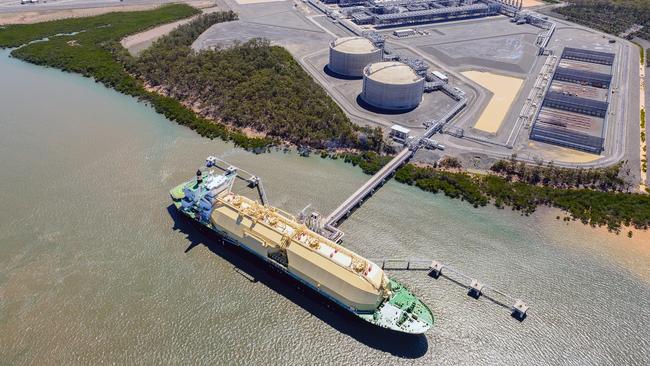Queensland coal seam gas shortfall threatening LNG exports, says Rystad
Queensland gas facilities could be shutting down within a decade, analysts warn.

Queensland gas producers may be forced to cut exports from its $84 billion LNG industry and shut down production units in the next decade due to falling coal seam gas production in the state, consultancy Rystad Energy has warned.
Supplies from producing or under-development coal seam gas projects in Queensland are set to fall by 60 per cent in the next 10 years, based on reported remaining proven and probable reserves and well numbers. While projects in the discovery and exploration phases will offset the reduction by half, it still leave a net 30 per cent fall in CSG production by 2029.
READ MORE: Surging LNG earnings bolster Origin profits | Gas prices: Row erupts over ‘excessive’ local costs | Labor at war over state gas ban
“For an LNG export industry already struggling to fill facilities, an additional 30 per cent reduction in feed gas would be disastrous, causing multiple trains to be taken offline,” Rystad senior upstream analyst Daniel Levy said.
Material reductions in export volumes will need to be made from 2026 with LNG trains closing by 2028 unless multi-trillion cubic feet of gas can be discovered and developed at a break-even price of less than $8 a gigajoule, Rystad reported.
The stark numbers mirror calculations made by consultancy EnergyQuest in February. It predicted a gas supply shortage by 2025 - rendering a third of the state’s gas export trains obsolete - and ratcheting up pressure on operators Origin Energy, Santos and Shell.

The timeline for LNG cuts could be extended if less gas from the export units is needed for domestic use or the electrification of LNG facilities could save volumes.
Rystad’s production assumptions do not include any additional writedowns of 2P or proved and probable reserves which it deemed optimistic given trends in the last three years with infill wells producing less than expected and acreage ‘sweet spots’ smaller and harder to target than previously thought this decade.
“In multiple cases, we have observed that in order to deplete 2P reserves, operators will need to decrease well spacing while moving out from their core acreage without significant drops in well productivity,” Mr Levy said. “This is an unlikely scenario given the underwhelming rate of improvement in technology and well productivity observed over the past decade.”
Potential extra production to feed Queensland’s LNG trains could come from the Northern Territory and Cooper Basin along with prospective CSG supplies in the Galilee and Bowen basins.
Origin, Santos and Shell built three separate LNG export plants adjacent to each other on Queensland’s Curtis Island. All three operators have since indicated they should have shared more facilities to lower risks and costs.
EnergyQuest noted on Thursday there was encouragement from the latest CSG reserves numbers released by the Queensland government.
“In 2018 CSG 2P reserves fell by 1,084 petajoules but with production of 1,470 PJ so there was an increase in reserves, before production, of 386 PJ. This is well below production replacement but it is encouraging to see,” EnergyQuest chief executive Graeme Bethune said.


To join the conversation, please log in. Don't have an account? Register
Join the conversation, you are commenting as Logout